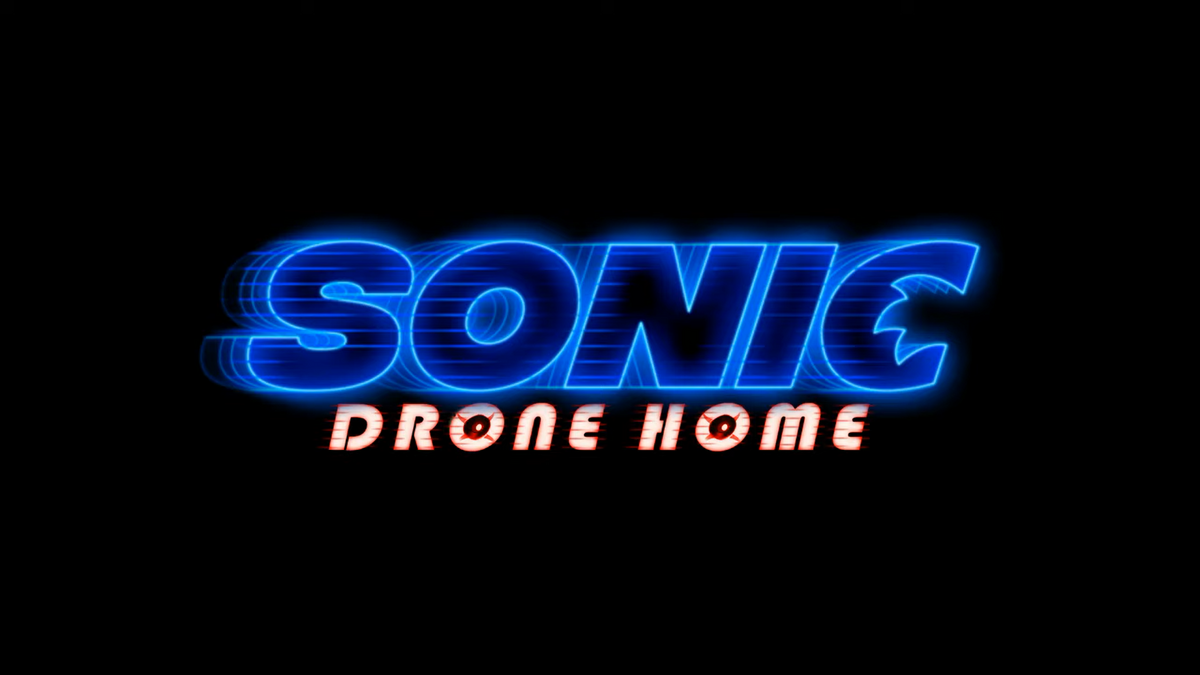Sonic Drone Home sets the stage for a fascinating exploration of advanced home security. This innovative technology utilizes sound waves for perimeter surveillance and threat detection, offering a unique approach to safeguarding homes. We will delve into the technological underpinnings, operational procedures, ethical considerations, and future potential of this intriguing system, examining its capabilities and limitations in detail.
Imagine a home security system that doesn’t rely on cameras or motion sensors, but instead uses the subtle vibrations and sounds in your environment to identify potential intruders. This is the promise of Sonic Drone Home, a concept that blends acoustic sensing with sophisticated algorithms to create a proactive and intelligent security solution. This exploration will examine its practical applications, compare it to existing systems, and address any potential concerns regarding privacy and security.
Defining “Sonic Drone Home”
A “sonic drone home” system utilizes airborne drones equipped with advanced acoustic sensors to enhance home security. This technology goes beyond traditional security systems by leveraging sound analysis to detect and respond to potential threats in real-time, offering a proactive and comprehensive approach to home protection.
Potential Applications and Uses
Sonic drone home technology offers a wide range of applications beyond basic security. It can be used for perimeter monitoring, detecting intrusions, identifying unusual noises indicative of trouble (broken glass, forced entry), and even monitoring environmental changes. The data collected can be used for preventative measures, alerting homeowners to potential issues before they escalate into serious threats.
Examples of Improved Home Security
A sonic drone home system could detect the sound of a window breaking, immediately alerting the homeowner and authorities. It could also identify unusual footsteps or the sounds of forced entry, triggering a response before an intruder gains access. The drones could even patrol the perimeter, identifying and deterring potential intruders through their presence alone.
Comparison with Existing Home Security Systems
Unlike traditional systems relying primarily on visual sensors (cameras) or contact sensors (doors and windows), sonic drone home systems add an auditory dimension. This offers a complementary approach, detecting threats that might be missed by other technologies. For instance, a quiet intruder might bypass visual surveillance, but their movements would still generate detectable sounds.
The development of sonic drone home technology is rapidly advancing, offering exciting possibilities for the future. Interestingly, the intensity of the Aston Villa vs Man City match, reported in detail here: Aston Villa vs Man City 2-1: English Premier League – as it happened , highlights the need for reliable, long-range communication systems – a key area where sonic drone home technology could play a crucial role in future applications.
Such advancements could greatly improve the overall efficiency and effectiveness of drone operations.
Technological Aspects of Sonic Drone Home
The effectiveness of a sonic drone home system hinges on a sophisticated interplay of hardware and software components.
The innovative aspects of sonic drone home technology are constantly evolving, leading to exciting possibilities. For a completely different type of high-stakes competition, check out the projected lineup for tonight’s game; you can find the Projected Lineup – Flames vs. Blackhawks here. Returning to the world of drones, the integration of advanced sonic technology promises to revolutionize home security and automation systems.
Technological Components

The system comprises several key components: autonomous drones equipped with high-sensitivity microphones, a central processing unit for data analysis, a secure communication network, and a user interface for monitoring and control. Power management systems for the drones are also critical for extended operational periods.
Sensors and Detection Methods
The drones employ an array of microphones to capture sound data from multiple directions. Advanced signal processing techniques are used to filter out background noise and identify specific sounds of interest, such as breaking glass, footsteps, or shouting. Machine learning algorithms can further enhance the system’s ability to distinguish between benign and threatening sounds.
System Architecture
| Component | Description | Function | Interface |
|---|---|---|---|
| Drone Array | Multiple autonomous drones equipped with microphones | Sound data acquisition | Wireless communication |
| Acoustic Sensors | High-sensitivity microphones with noise reduction capabilities | Precise sound capture and filtering | Drone onboard processing |
| Central Processing Unit (CPU) | Server for data analysis and threat assessment | Sound analysis, threat identification, and alert generation | Network communication |
| User Interface (UI) | Mobile app or desktop software for monitoring and control | Real-time monitoring, alert management, and system configuration | CPU and communication network |
Sound Analysis Algorithms, Sonic drone home
Algorithms such as spectral subtraction, wavelet transforms, and machine learning models (e.g., convolutional neural networks) are employed for sound analysis. These algorithms help identify patterns in sound data that indicate potential threats. Machine learning models are trained on large datasets of various sounds to improve their accuracy and efficiency in identifying threats.
Operational Procedures and Safety

Safe and effective operation of a sonic drone home system requires adherence to established procedures and protocols.
Operational Procedure
- System Initialization: Power on the central processing unit and drones.
- Perimeter Mapping: Allow the drones to map the property perimeter using GPS and onboard sensors.
- Patrol Initiation: Initiate automated patrol routes for the drones.
- Monitoring: Monitor the system through the user interface for alerts and real-time data.
- Response: Take appropriate action based on alerts received (e.g., contacting authorities, investigating the area).
- System Shutdown: Power down the system after use.
Safety Protocols and Emergency Procedures
Safety protocols include regular system maintenance, drone battery checks, and emergency shut-off mechanisms. In case of system malfunction, immediate power down is crucial. Emergency procedures include contacting local authorities and providing them with system data to assist in investigations.
Potential Risks and Vulnerabilities

Potential risks include system malfunctions, unauthorized access, data breaches, and the potential for false alarms. Environmental factors like extreme weather conditions can also affect system performance.
Mitigation Strategies
Mitigation strategies include implementing robust security measures, regular system updates, and redundancy mechanisms. Data encryption and access controls can help prevent unauthorized access. Thorough testing and calibration can minimize false alarms.
Ethical and Legal Considerations
The use of sonic drone home technology raises several ethical and legal concerns.
Ethical Implications
Ethical concerns include privacy violations, potential for misuse, and the impact on the overall sense of security and community. The system’s ability to passively collect audio data raises questions about personal privacy and data protection.
Potential for Misuse and Abuse
The technology could be misused for surveillance, harassment, or intimidation. Improper configuration or malicious intent could lead to privacy violations or false accusations.
Legal Frameworks and Regulations
Current regulations concerning drone use and data privacy will apply. Additional regulations may be necessary to address the unique challenges posed by sonic drone home systems. Compliance with data protection laws is paramount.
Legal Comparison with Existing Surveillance Technologies
Compared to existing surveillance technologies, sonic drone home systems raise novel legal issues due to the passive nature of audio data collection. The legal framework surrounding audio surveillance differs significantly from video surveillance, requiring careful consideration of privacy rights.
Illustrative Examples and Scenarios
Hypothetical scenarios can illustrate the potential benefits and drawbacks of this technology.
Successful Use Case
An intruder attempts to break into a home at night. The sonic drone home system detects the sound of breaking glass, immediately alerts the homeowner, and records audio evidence. Law enforcement is contacted, and the intruder is apprehended.
System in Action
Imagine three small, autonomous drones silently patrolling the perimeter of a house. Each drone is equipped with multiple microphones that constantly monitor for unusual sounds. If a sound, such as the distinct shattering of glass, is detected, the drone transmits the audio data to a central processing unit. This unit analyzes the sound, confirms the threat, and sends an immediate alert to the homeowner’s smartphone, along with a location pinpointing the source of the sound.
The drones’ movements are coordinated, and they can converge on the source of the threat to provide further surveillance.
System Failure Scenario
A severe thunderstorm causes a power outage, disabling the central processing unit and the drones. An intruder gains entry to the home undetected, resulting in a successful break-in.
Comparative Table of Scenarios
| Scenario | Outcome |
|---|---|
| Successful Intrusion Detection | Intruder apprehended, property secured, audio evidence collected. |
| System Failure during Intrusion | Successful break-in, property compromised, no evidence recorded. |
Future Developments and Potential Improvements
The field of sonic drone home technology is ripe for innovation and improvement.
Areas for Improvement
Areas for improvement include enhanced noise cancellation, more robust power management, improved algorithms for threat identification, and integration with other smart home systems.
AI and ML Integration
Integrating AI and ML will significantly improve the system’s ability to learn and adapt to different environments and threats. AI can help optimize drone flight paths, improve sound analysis, and provide more accurate threat assessments.
Innovative Features
Innovative features could include voice recognition for identifying specific individuals, integration with smart locks for automated responses, and the ability to distinguish between different types of threats.
Future Vision
The future of sonic drone home technology lies in creating more sophisticated, autonomous, and integrated systems that offer a proactive and comprehensive approach to home security, seamlessly blending with other smart home technologies to create a truly secure and intelligent living environment.
Sonic Drone Home represents a significant leap forward in home security technology, offering a novel approach to perimeter protection. While challenges remain regarding ethical implications and potential vulnerabilities, the innovative use of acoustic sensing presents exciting possibilities for the future. Continued development and refinement of this technology could revolutionize how we safeguard our homes, providing a more proactive and nuanced security solution.
The potential for integration with AI and machine learning promises even greater accuracy and effectiveness in the years to come.
FAQ Explained: Sonic Drone Home
What is the range of a Sonic Drone Home system?
The range depends on the specific system design and environmental factors, but it can potentially cover a significant area around the home.
How does Sonic Drone Home handle false positives?
Sophisticated algorithms are used to filter out environmental noise and distinguish between genuine threats and harmless sounds.
Is Sonic Drone Home compatible with existing smart home systems?
Integration with other smart home systems is a likely area of future development, enhancing overall home automation.
What happens if the power goes out?
Backup power solutions, such as batteries, would be crucial for continuous operation during power outages.